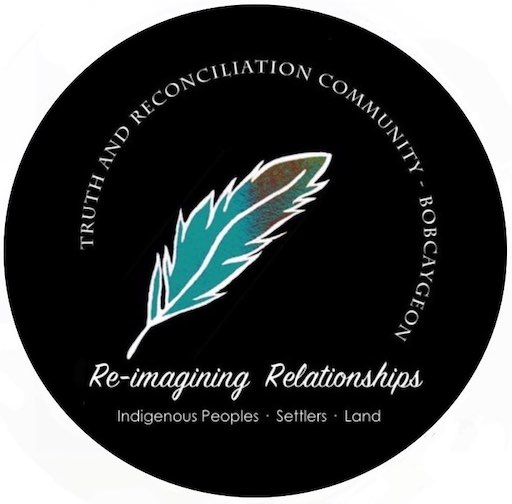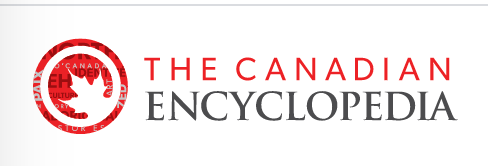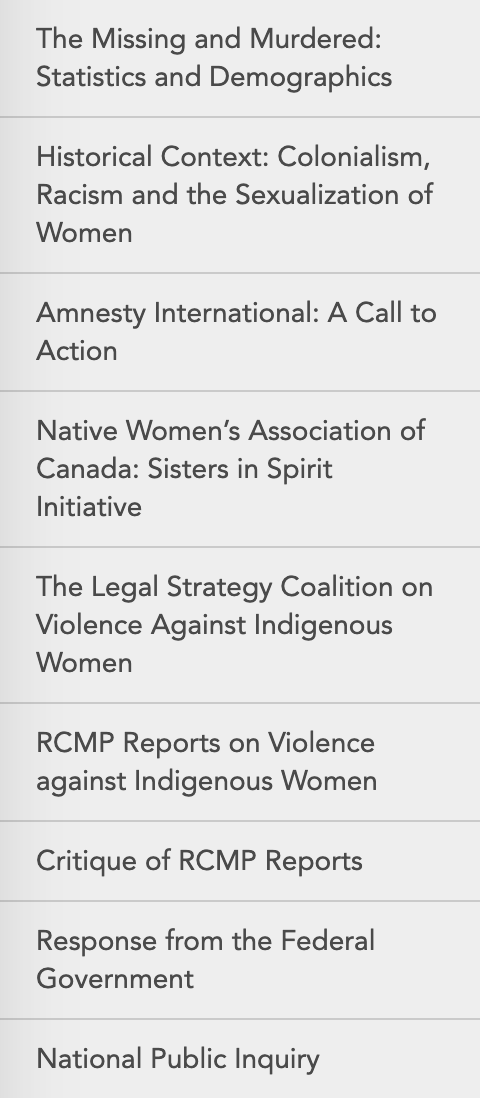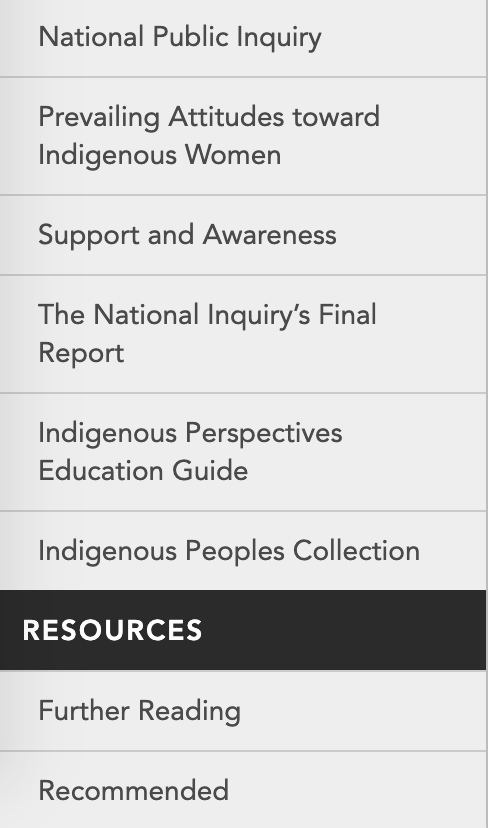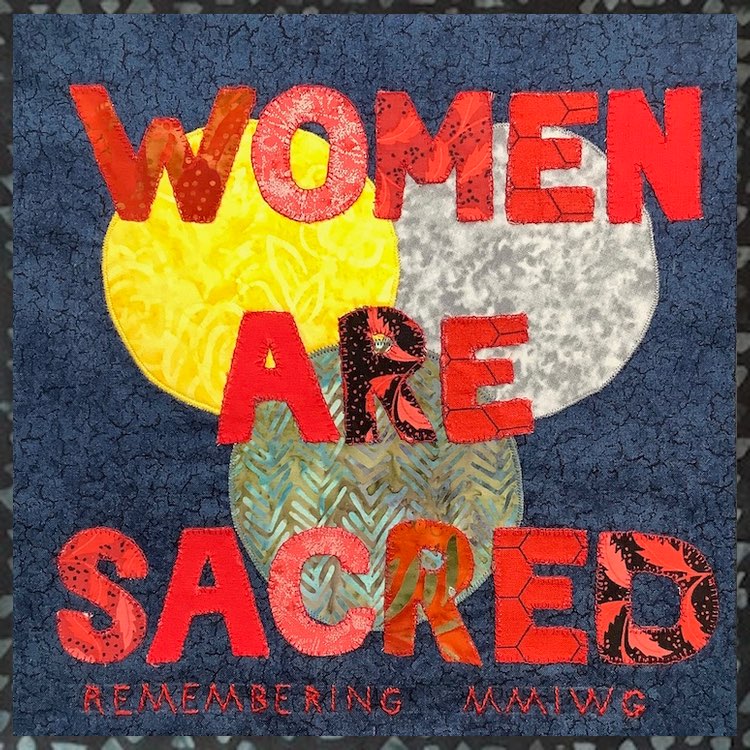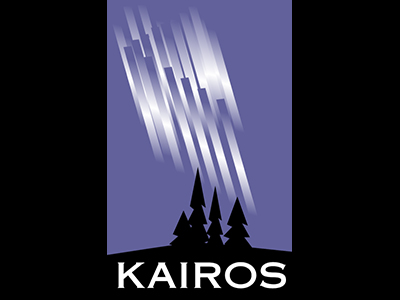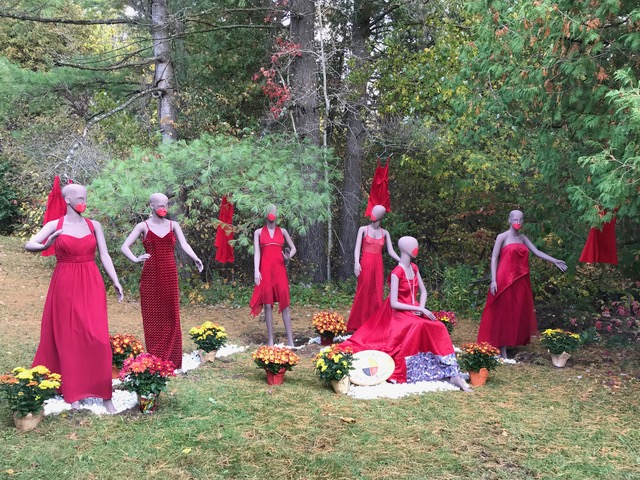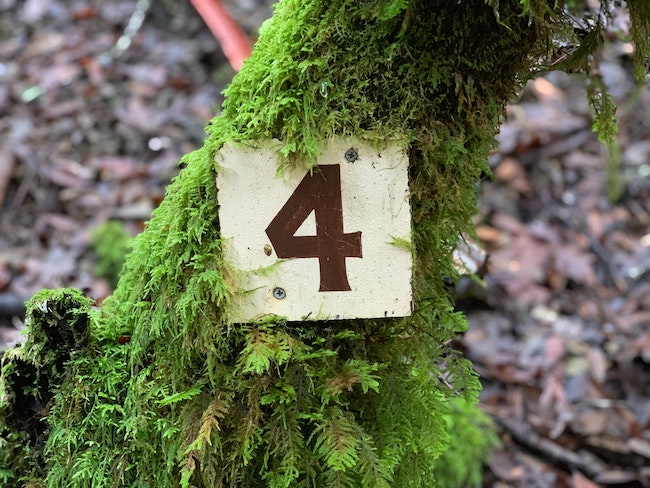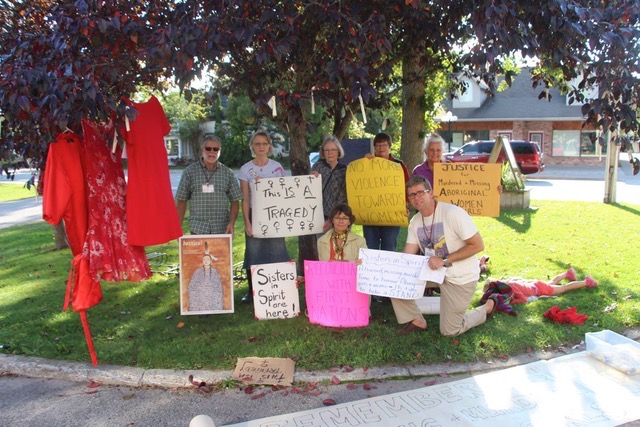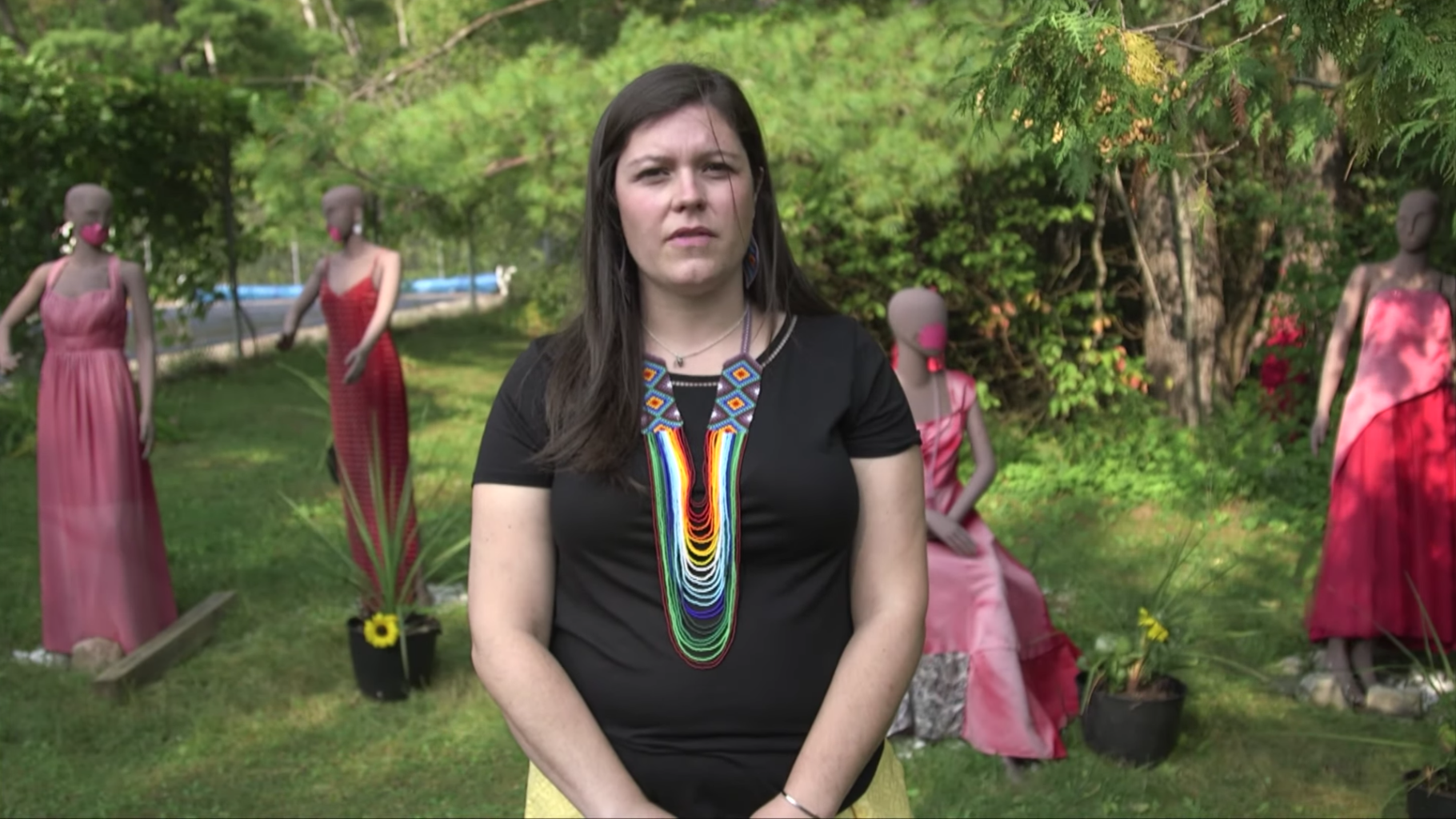MMIWG
Missing and Murdered Indigenous
Women and Girls
MMIWG
Shortcut to links article, Fact sheets, resources, actions outlined below
Overview
Resources
Overview
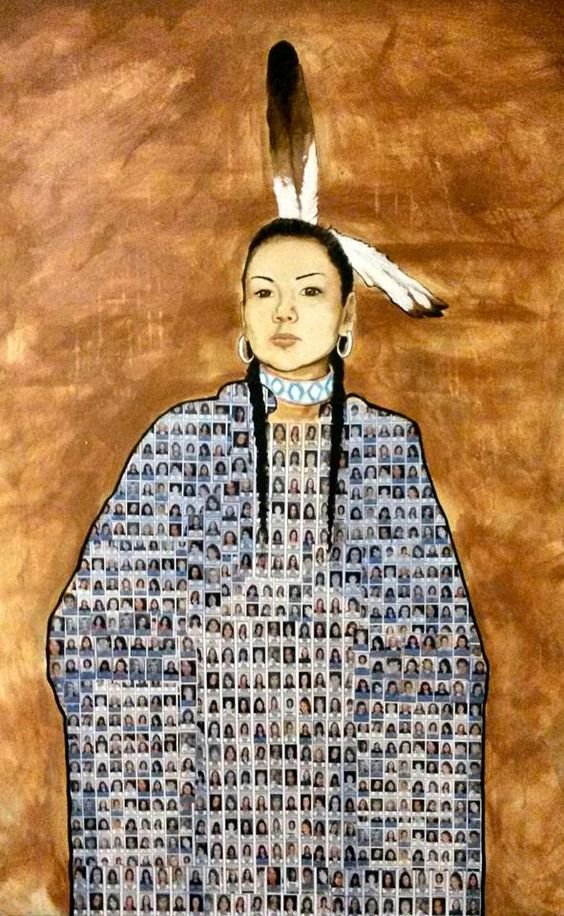
Still Dancing by Jonathan LaBillois
Some highlights from Kairos’ Timeline regarding Missing and Murdered Indigenous Woman and Girls
2002 – Native Women’s Association, Amnesty International Canada, KAIROS, Elizabeth Fry Society, the United Church and the Anglican Church form “National Coalition for our Stolen Sisters”.
2004
– Amnesty International releases “No More Stolen Sisters” Report
2005 – Native Women’s Association (NWAC) begins Sisters In Spirit initiative. This initiative is funded by Status of Women Canada (SWC) to conduct research into violence against Aboriginal women.
March 2006 – Highway of Tears Symposium is held in Prince George, B.C. to raise public awareness and create a call for action regarding the missing and murdered women on the stretch of Highway 16 in B.C. now known as the Highway of Tears (Highway of Tears Symposium Recommendations Report (2006). Highway of Tears Initiative launched as a result of the Symposium.
2014 – Royal Canadian Mounted Police (RCMP)’s “Missing and Murdered Aboriginal Women: A National Operational Review” identifies a total of 1,181 missing and murdered Indigenous women.
Mission Of National Inquiry
We will find the truth by gathering many stories from many people.
These truths will weave together to show us what violence really looks like for Indigenous women and girls in Canada… through:
- Community Hearings, Institutional Hearings, Knowledge Keeper and Expert Hearings
- Past and current research
- Collaborations with Elders and Knowledge Keepers
- Forensic analysis of police records
For far too long, Indigenous women and girls have been publicly devalued or ignored. People’s general perceptions have been shaped by harmful colonial stereotypes. People forget that every Indigenous woman or girl—no matter how she died or what she had been through—had an inherent strength and sacred worth. We need to transform the national conversation about Indigenous women, girls, and 2SLGBTQQIA people. To build a strong foundation for healing, justice, and reconciliation, governments and institutions must change. So must our society’s attitudes and understanding of the issue.
*from the MMIWG website
The Canadian Encyclopedia has a wonderful and thorough article by Jennifer Brant PhD – Mohawk with family ties to Six Nations of the Grand River Territory and Tyendinaga Mohawk Territory. Jennifer’s work is inspired by her passion for teaching Indigenous women’s literature as an educational tool to inspire empathy, compassion, healing and wellness. The content of this article outlined here will give you a great understanding.
See Resources From Above Resource Now...
From Canadian Encyclopedia (online)
https://thecanadianencyclopedia.ca/en/article/missing-and-murdered-indigenous-women-and-girls-in-canada
Further Reading
Maggie de Vries, Missing Sarah: A Memoir of Loss (2003).
Brenda Anderson, Wendee Kubik and Mary Rucklos Hampton, eds. Torn from our Midst: Voices of Grief, Healing and Action from the Missing Indigenous Women Conference, 2008 (2010).
Emmanuelle Walter, Stolen Sisters: The Story of Two Missing Girls, Their Families and How Canada Has Failed Indigenous Women (2015).
Memee Lavell-Harvard and Jennifer Brant, Forever Loved: Exposing the Hidden Crisis of Missing and Murdered Indigenous Women and Girls in Canada (2016).
External Links
- GOVERNMENT OF CANADA National Inquiry into Missing and Murdered Indigenous Women and Girls
- REDRESS CAMPAIGN The REDress Campaign is an art installation project that focuses on the issue of missing and murdered Indigenous women and girls
- WALKING WITH OUR SISTERS A large collaborative art piece featuring moccasins that represent the missing and murdered.
- CBC NEWS, “Premier Scott Moe disagrees with MMIWG inquiry’s genocide finding Social Sharing”
- TORONTO STAR, Chantal Hébert reports, “Trudeau sows confusion with his mixed messaging on Indigenous genocide”
- CBC NEWS, Jorge Barrera reports, “Canada aimed to ‘destroy Indigenous people’: The MMIWG inquiry’s case for genocide”
- Globe and Mail Editorial, “Is Canada committing genocide? That doesn’t add up”
- National Inquiry into Missing and Murdered Indigenous Women and Girls, Reclaiming Power and Place: The Final Report of the National Inquiry into Missing and Murdered Indigenous Women and Girls (Website has the National Inquiry’s two-volume report, the “Supplementary report” for Quebec, news releases, and videos)
- The Globe and Mail, Laura Kane Reports, “Canada must know the truth before it can achieve reconciliation, MMIWG inquiry’s chief commissioner says”
- The Canadian Press (HUFFPOST), “Andrew Scheer Disagrees with MMIWG Inquiry’s Finding Of ‘Genocide”
- CBC NEWS The National, “Political Fallout to the MMIWG inquiry final report | At Issue”
- CBC News, MMIWG Final Report closing ceremony live on You Tube
- APTN News, “‘This is an uncomfortable day for Canada’: Trudeau’s speech at MMIWG closing ceremony” on You Tube
- Toronto Star, Nick Patch Reports, “Zoe Saldana making doc on Canada’s missing Indigenous women”
- CBC NEWS Missing and Murdered: The Unsolved Cases of Indigenous Women and Gir
Documentaries:
Nick Printup, director and producer of the documentary Our Sisters in Spirit (2015),
Zoe Saldana co-produced by Cinestar Pictures Gone Missing 2016
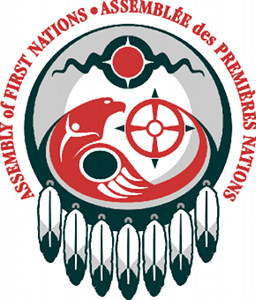
Important Facts (2020)
- Indigenous women make up 16% of all female homicide victims, and 11% of missing women, even though Indigenous people make up 4.3% of the population of Canada.
- Violence against Indigenous women and girls is systemic and a national crisis that requires urgent, informed and collaborative action.
- Indigenous women are three times more likely than non-Indigenous women to be victims of violence.
- Current public data on MMIWG oversimplifies and underrepresents the scale of the issue, yet still demonstrates a complex and pervasive pattern of violence against Indigenous women and girls who are often targeted because of their gender and Indigenous identity.
- The 2014 RCMP Operational Overview notes that police recorded 1,017 incidents of Aboriginal female homicides between 1980 and 2012 and 164 missing Aboriginal female investigations dating back to 1952. There have been a number of reports indicating numbers are significantly higher.
- From 2001 to 2014 the average rate of homicides involving Indigenous female victims was four times higher than that of homicides involving non-Indigenous female victims.
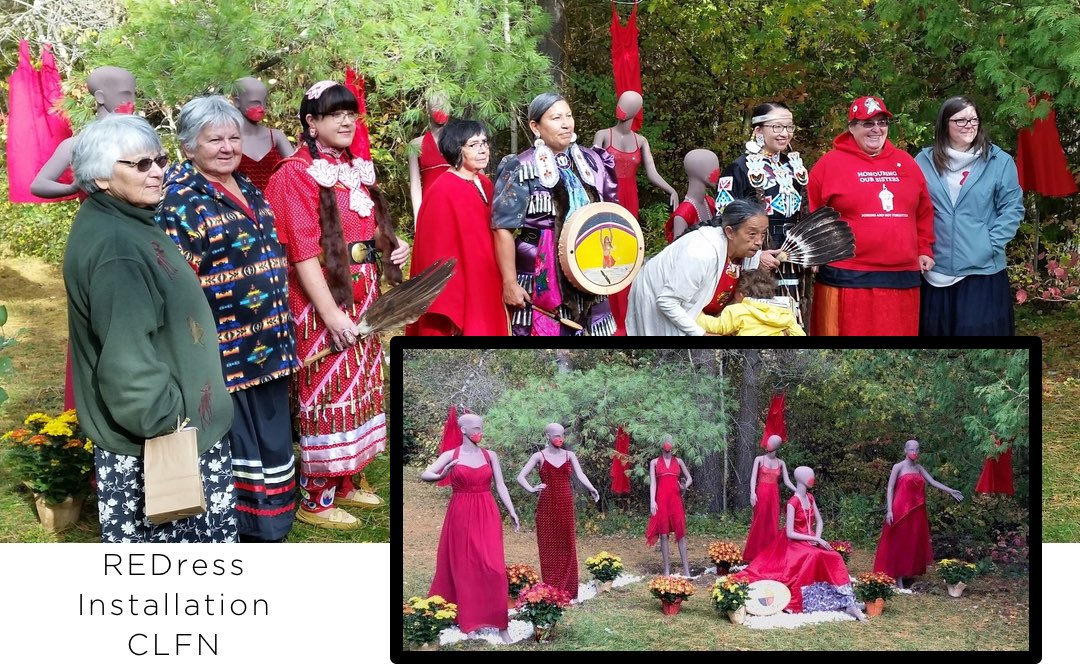
Resources
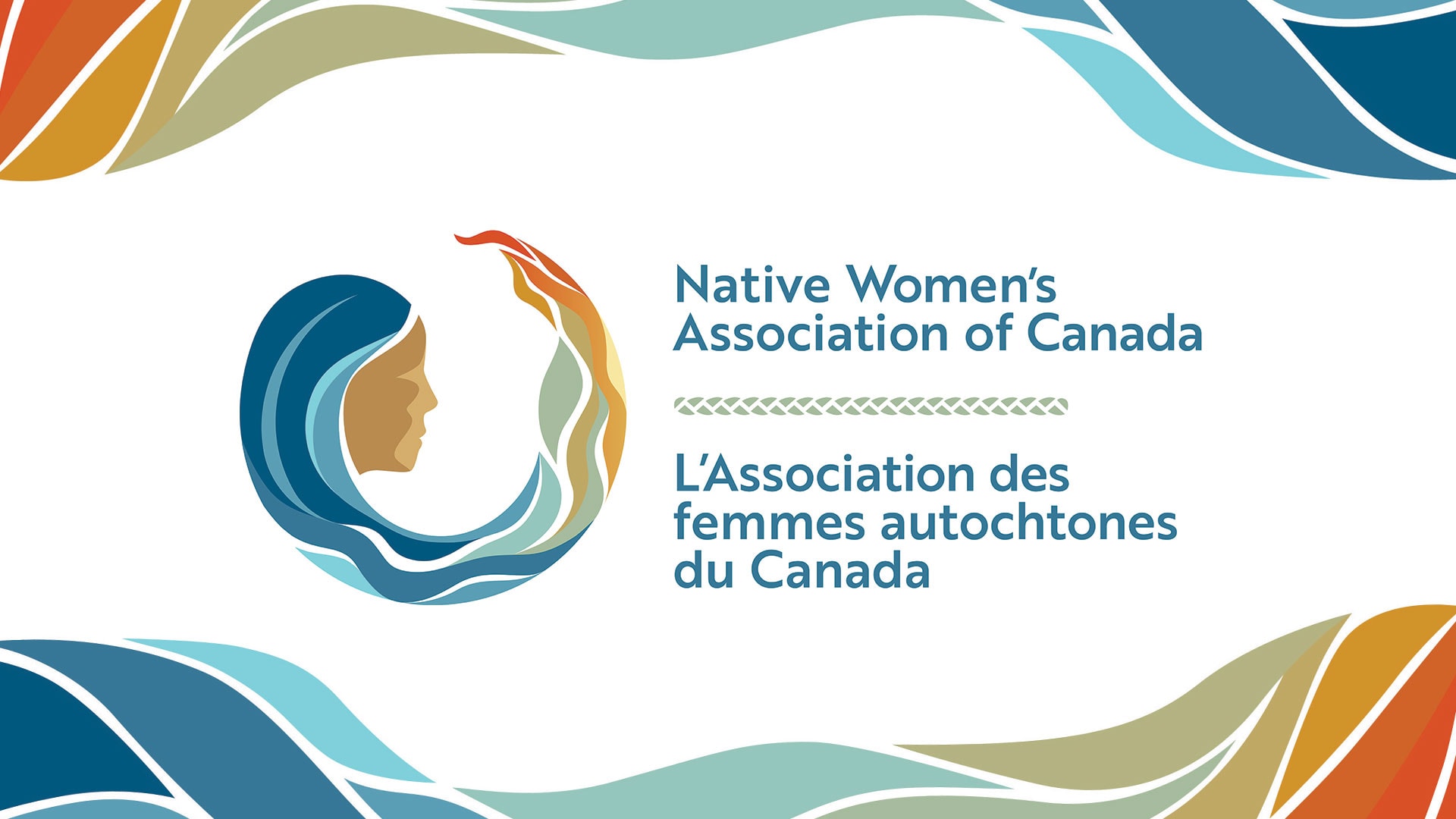
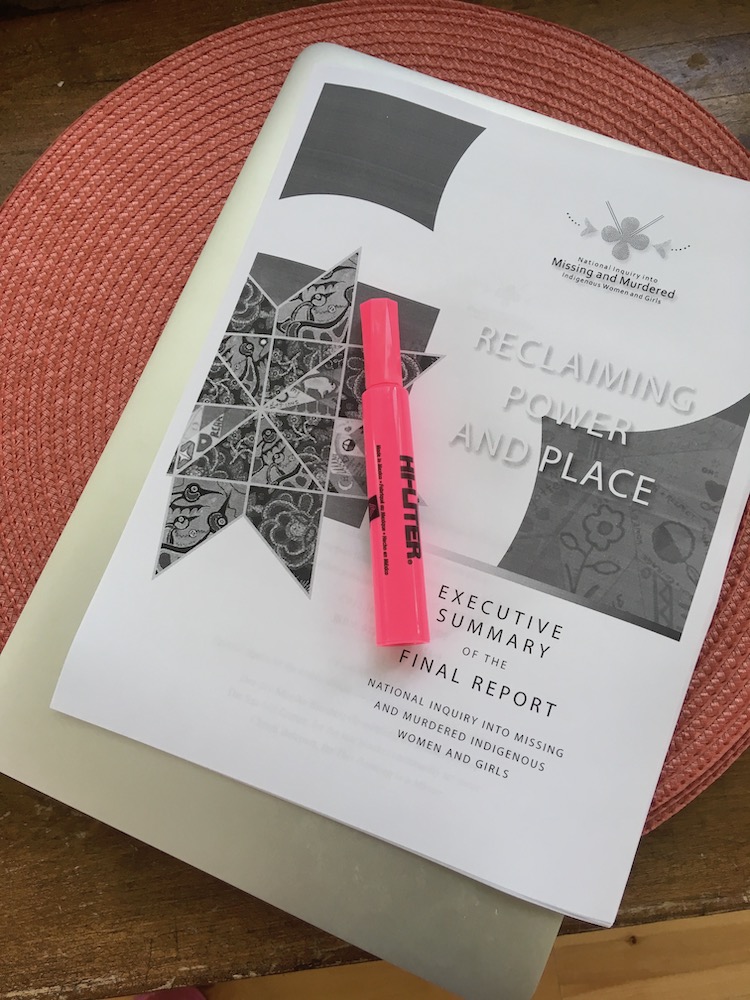
Reading The Report
Our TRC group had been following the progress of the Inquiry on Murdered and Missing Indigenous women and Girls (MMIWG) in Canada. It was a mammoth undertaking fraught with controversy and we felt that it would be important to inform ourselves on the results.
Because the report is heavy reading in terms of content and volume, we decided to meet regularly over a couple of months and break the report down into sizeable chunks. It felt important to also be able to process what we had just read and doing this together made sense. Read more about our process.
Visit the Info Hub for MMIWG on the KAIROS site: The Information Hub “is focused on providing information, resources and updates related to the national inquiry into missing and murdered Indigenous women and girls in Canada.” Links to academic articles, art, books, films/documentaries, podcasts and videos.
CBC News has looked into 34 cases across Canada which involve the death or disappearance of Indigenous women, but which authorities say were not due to foul play.
In every case, families of the women say they do not accept the findings of police. They suggest murder may be involved.
CBC News found evidence in many of the cases that points to suspicious circumstances, unexplained bruises and other factors that suggest further investigation is warranted.
There is a profile for each person.
This project is part of CBC’s ongoing investigation into missing and murdered Indigenous women. To search more than 250 of those cases, use the Case Explorer at the bottom of the page on the CBC site.
APTN Series – Taken
Documenting unsolved cases of MMIWG
Film : Highway of Tears
September 2020 in Canada

This KAIROS site has a list of 15 actions Allies can take to make changes in our society to stop the tide of racism against Indigenous people and the violence towards Indigenous women and girls in particular. It begins with an important link to Dr. Lynn Gehl’s List of Ally Responsibilities.
Join Amnesty International’s Work Campaign – No More Stolen Sisters. Learn five actions you can take today.
REDress Project on FaceBook
“A visual art installation project with strong ties to the community and broader public, The REDress Project is based on an aesthetic response to the more than 500 missing and murdered Aboriginal women in Canada. Drawing attention to the gendered and racialized nature of violent crimes against Aboriginal women the installation seeks to evoke a presence through the marking of absence… please visit: theredressproject.org”
